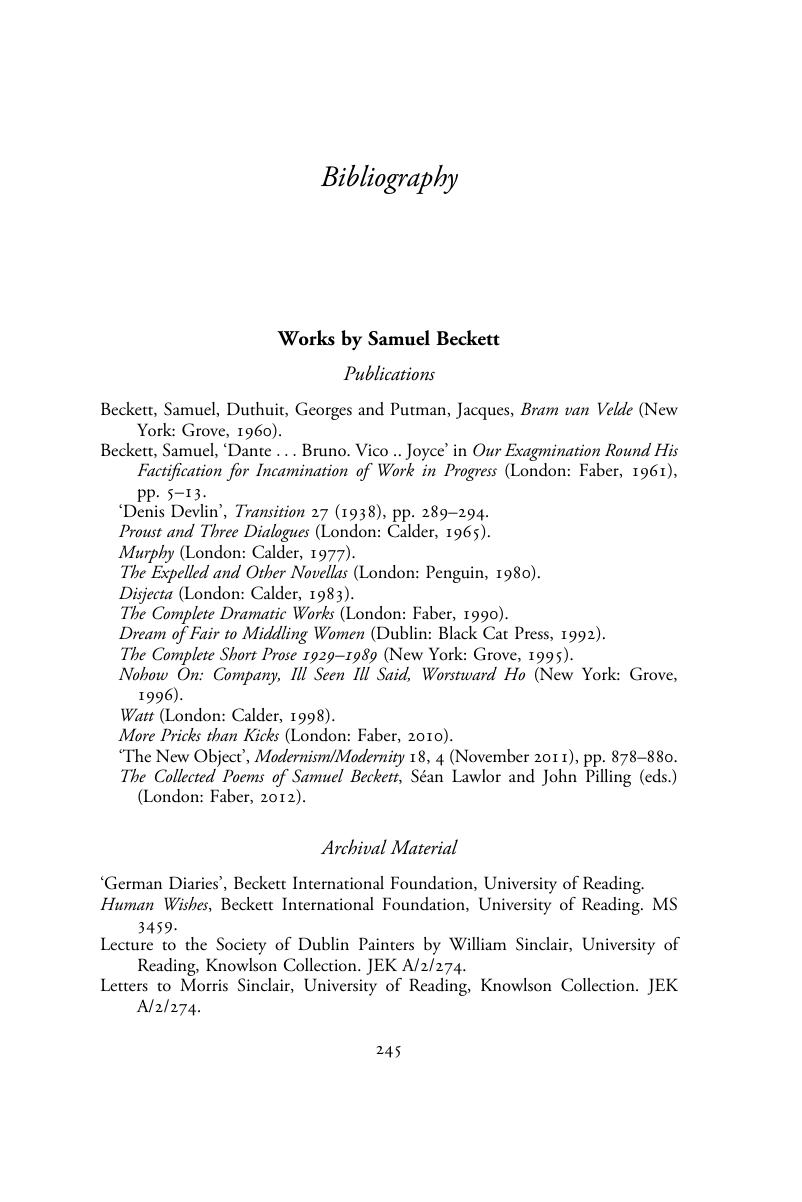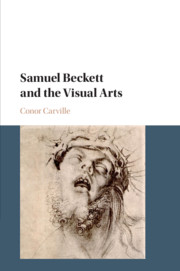Book contents
- Samuel Beckett and the Visual Arts
- Samuel Beckett and the Visual Arts
- Copyright page
- Dedication
- Contents
- Figures
- Acknowledgements
- Introduction
- Chapter 1 A Poetics of the Image
- Chapter 2 The Politics of the Image
- Chapter 3 Beckett’s German Renaissance
- Chapter 4 ‘Terrifying Materiality’
- Chapter 5 Impossible Image
- Chapter 6 From Bram van Velde to The Unnamable
- Chapter 7 ‘Sordid Abstraction’
- Bibliography
- Index
- References
Bibliography
Published online by Cambridge University Press: 18 April 2018
- Samuel Beckett and the Visual Arts
- Samuel Beckett and the Visual Arts
- Copyright page
- Dedication
- Contents
- Figures
- Acknowledgements
- Introduction
- Chapter 1 A Poetics of the Image
- Chapter 2 The Politics of the Image
- Chapter 3 Beckett’s German Renaissance
- Chapter 4 ‘Terrifying Materiality’
- Chapter 5 Impossible Image
- Chapter 6 From Bram van Velde to The Unnamable
- Chapter 7 ‘Sordid Abstraction’
- Bibliography
- Index
- References
Summary

- Type
- Chapter
- Information
- Samuel Beckett and the Visual Arts , pp. 245 - 258Publisher: Cambridge University PressPrint publication year: 2018



